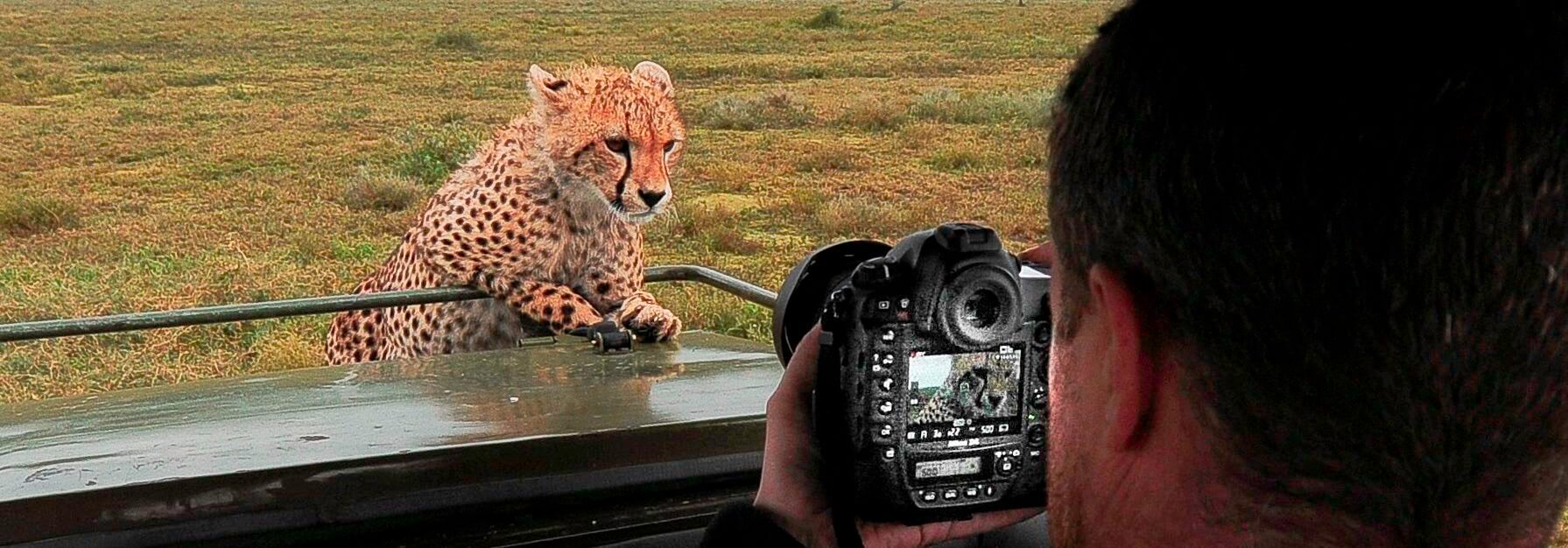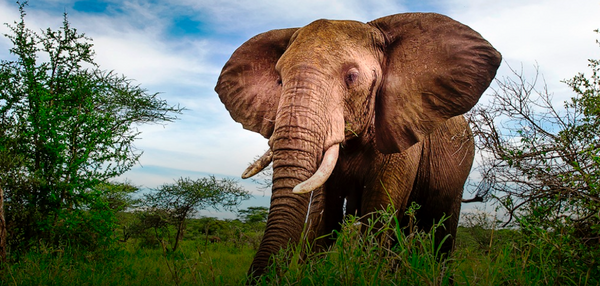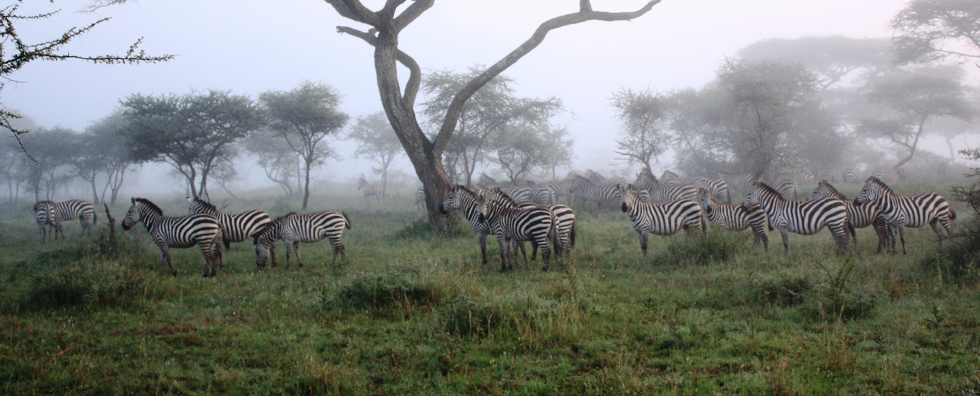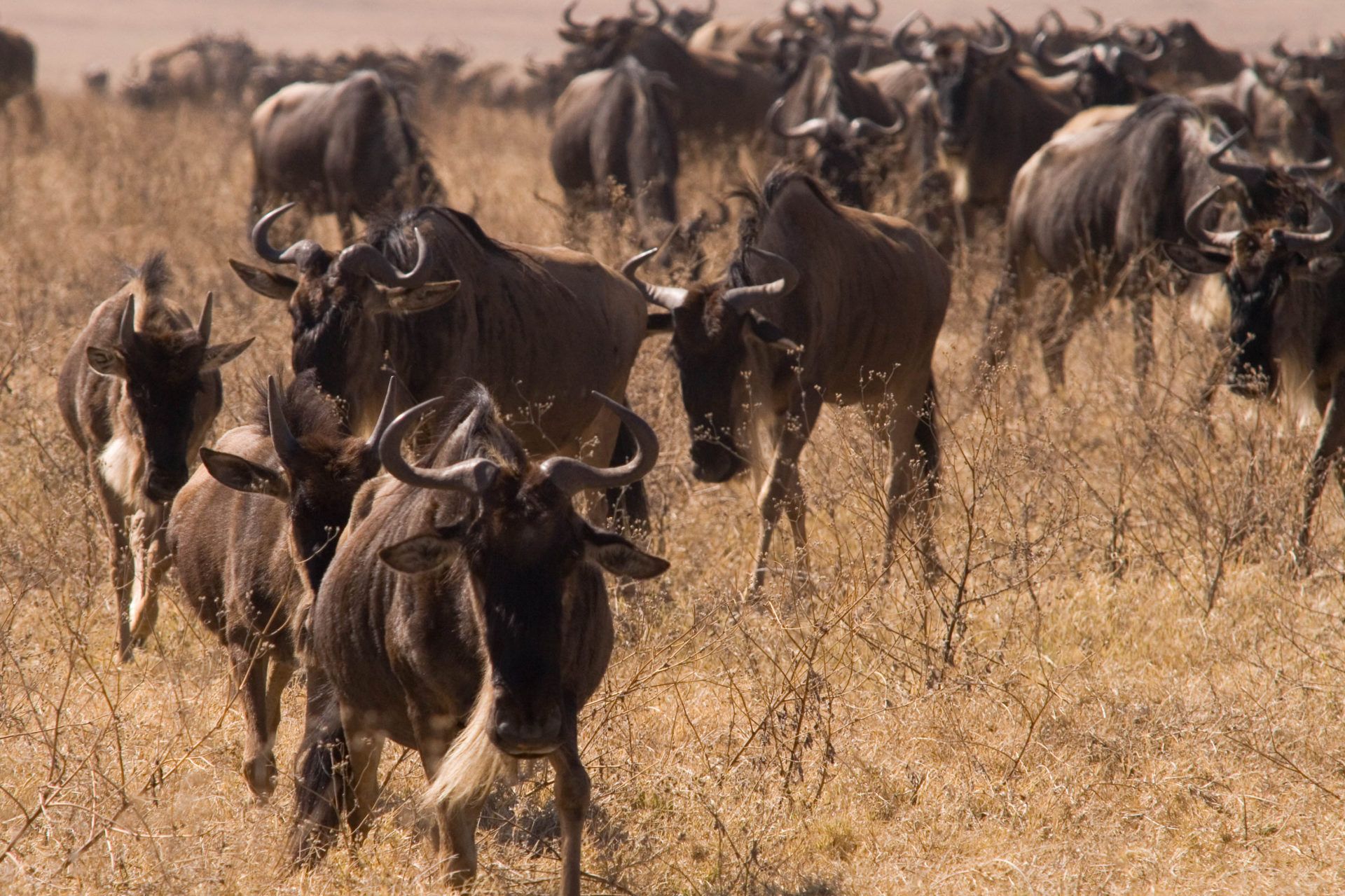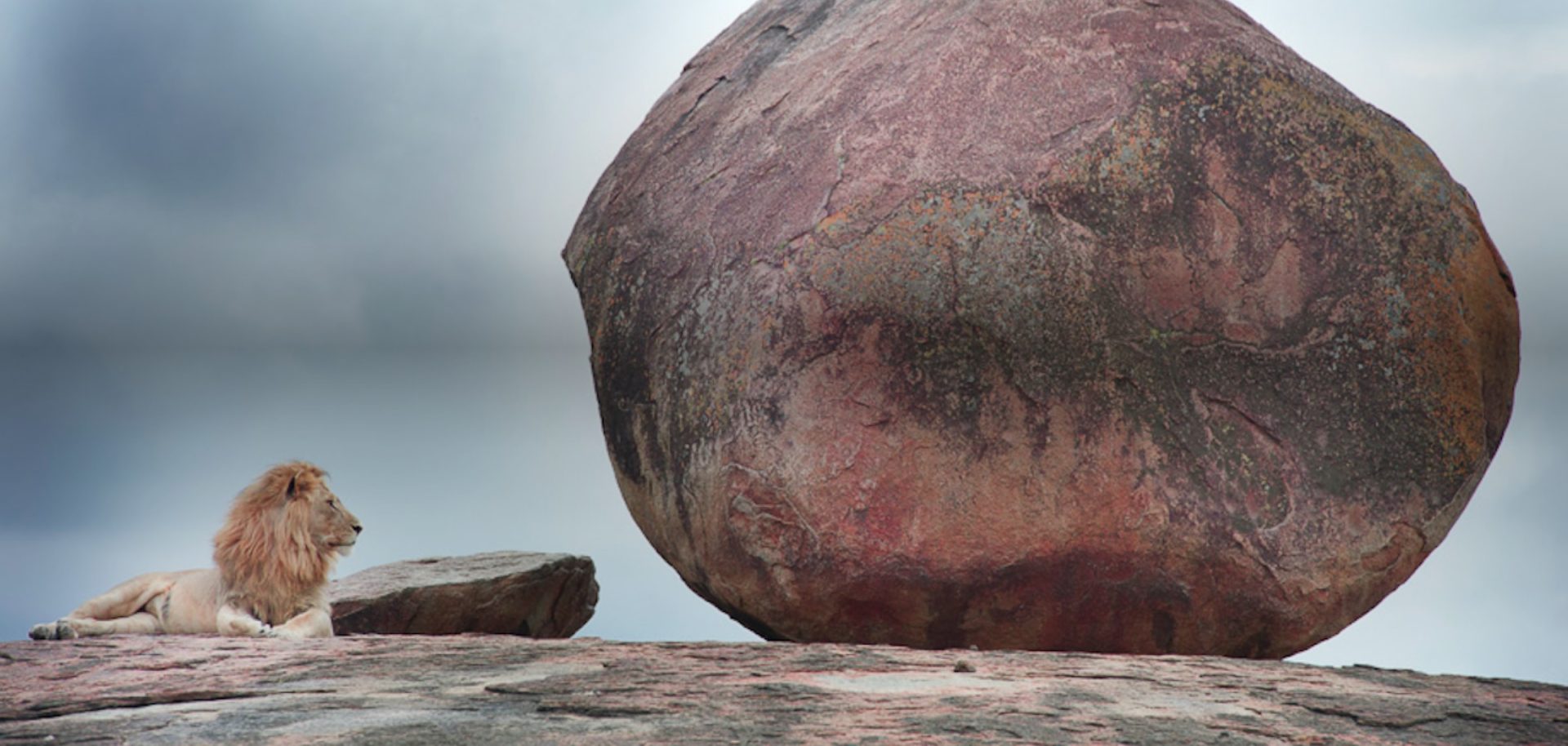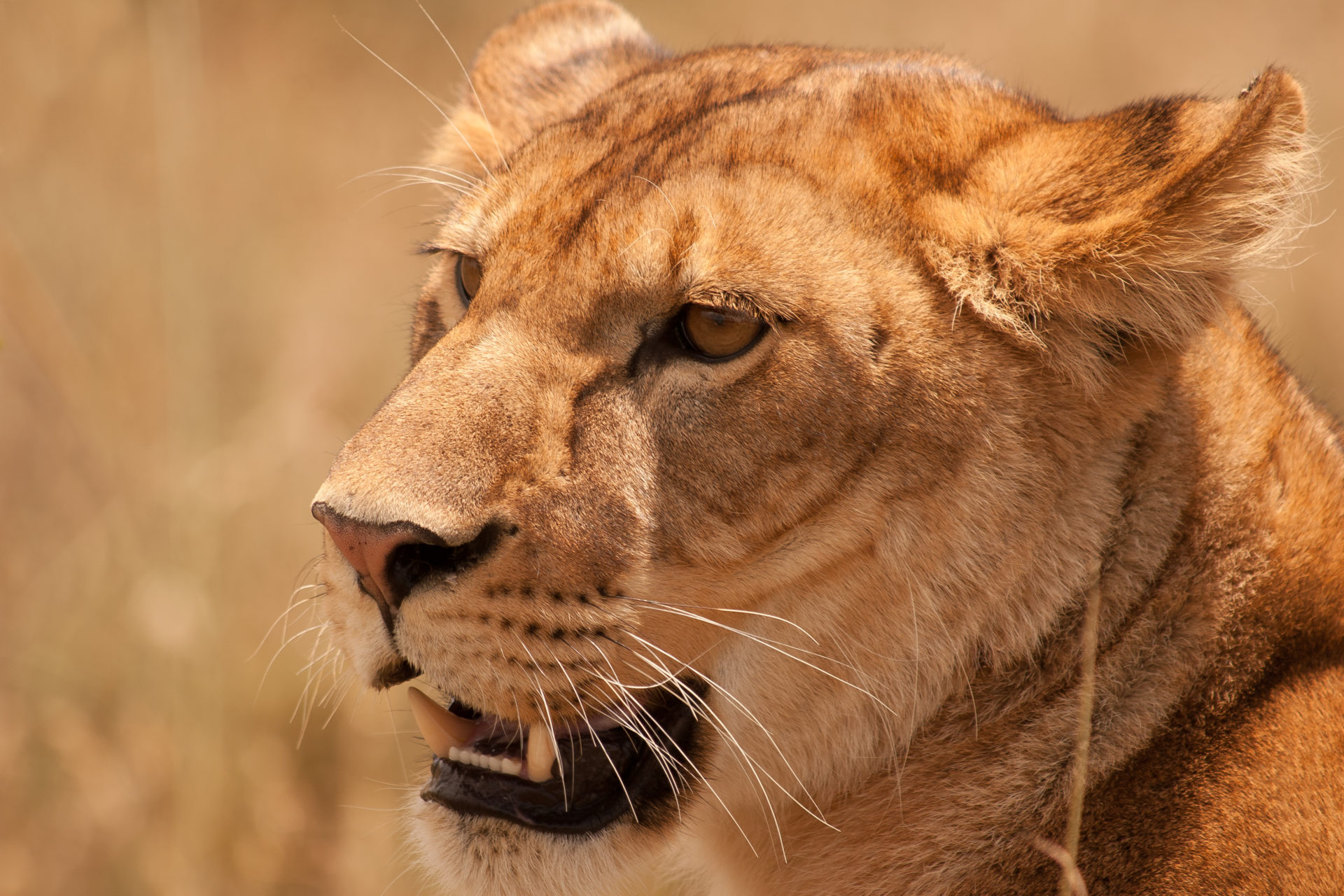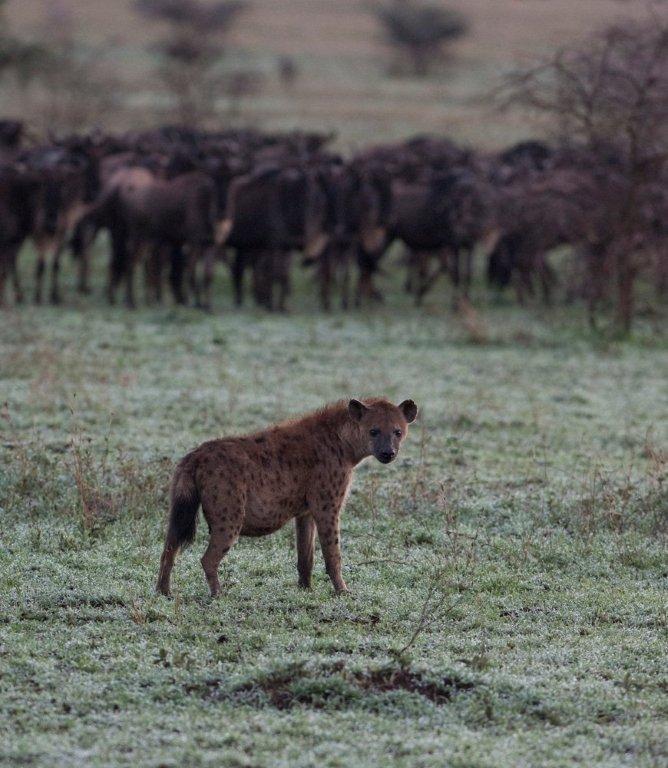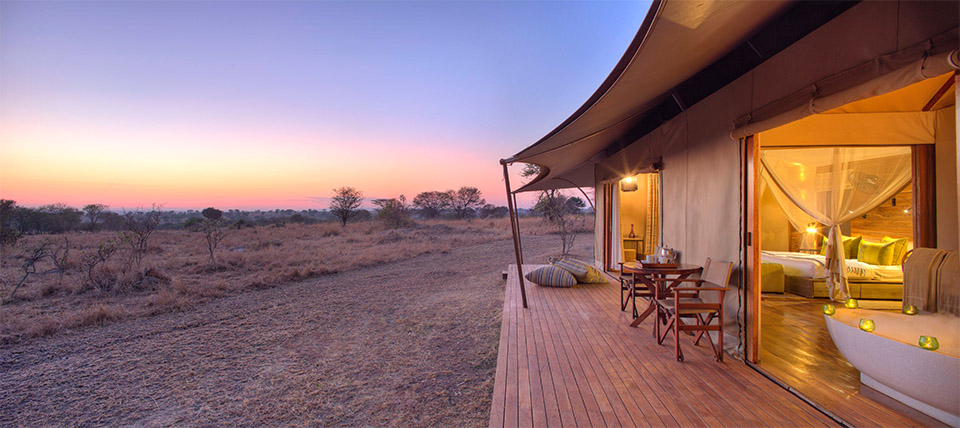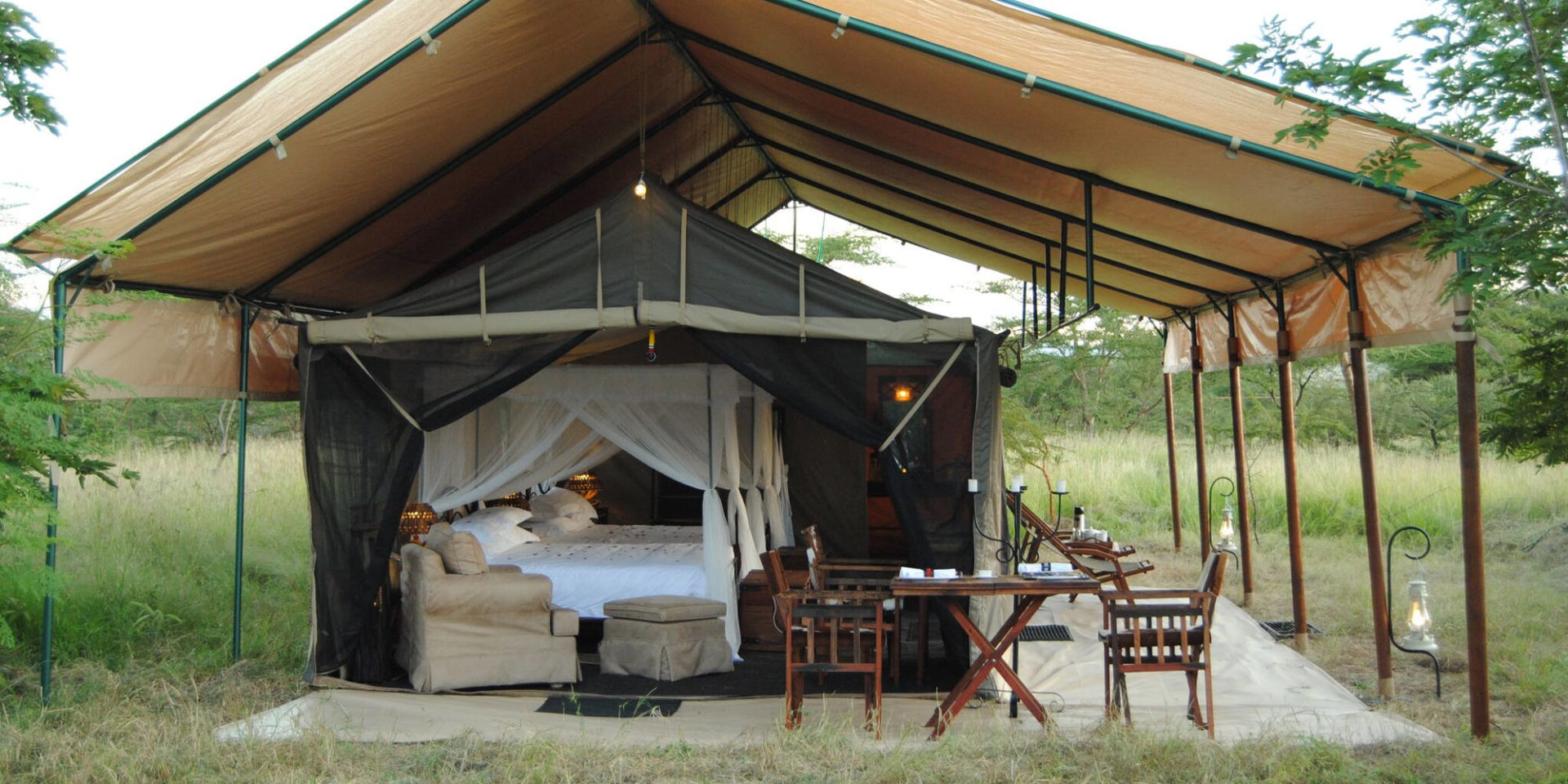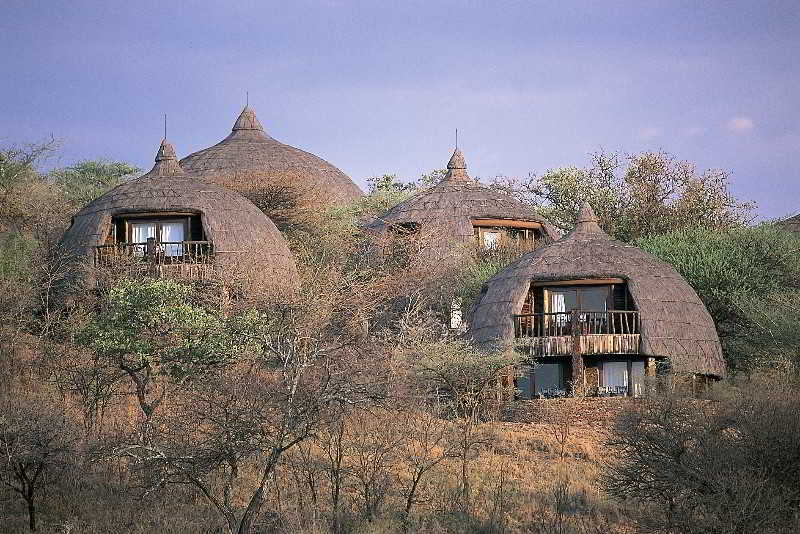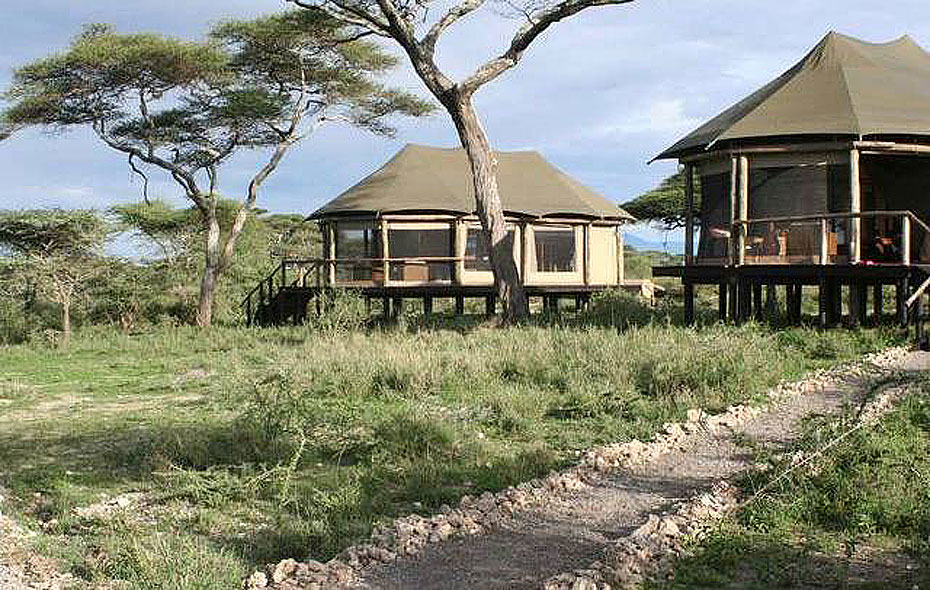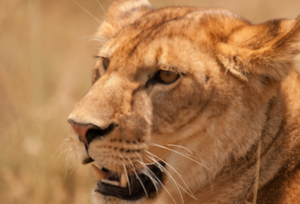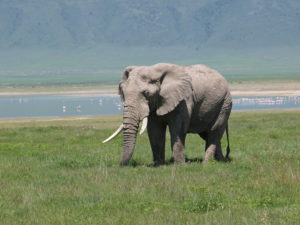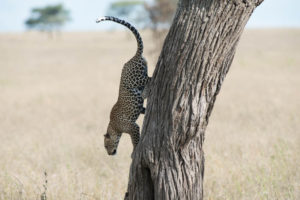Serengeti
The Serengeti is one of the most famous parks in Africa and is synonymous with wildlife and classic African scenery. It is Tanzania’s oldest park and a Unesco World Heritage Site. It is home to of the few surviving mammal migration systems. Serengeti is in many ways the very best of Tanzania's large protected natural areas.
Highlights of the Serengeti
The wildebeest migration
More than two millions wildebeests and zebras migrate clockwise across the plains from Ndutu short grass plains in via Seronera, Grumeti and Ikorongo to the rolling hills of Masai Mara and Kogatende in the north and then back again.
The lions of Serengeti
Home to over 3000 lions with numerous prides in all parts of Serengeti this is the place to go for close encounters with the king of beasts.
Big cats and small cats
Serengeti is the number one park to spot big cats. Serengeti is home to lion, leopard and cheetah. They are very common to see. Serenbgeti is also home to smaller cats like African wildcat and cerval.
The endless plains
Climb the trail from the main gate of Serengeti National Park to the top of Nabi Hill for a 180 degree view of seeming endless plains. The ocean of grass stretching in three directions really gives you perspective of the vast plains of Serengeti.
Herbivores
Serengeti is known for the huge herds of wildebeest and zebra but it is alos home to many other herbivores such as waterbuck, klipspringer, hartbeast, kudu, eland, giraffe, Thomson's gazelle, Grant's gazelle, elephant and many more.
Carnivores
Serengeti is arguably the best place in the world to see carnivores. On your safari in Serengeti you can spot lion, striped hyena, spotted hyena, jackal, African wild dog, cerval cat, crocodile, caracal, leopard, cheetah among others.
Wildlife and nature
Serengeti is home to the most diverse wildlife on earth is terms of large mammals. Famous for the annual migration where over 2 million wildebeests and zebras migrate clockwise from Ndutu plains in southern Serengeti via Seronera, Grumeti and Ikorongo to Kogatende and Masai Mara in the north and then back to Ndutu via Lobo, Loliondo and Seronera. This is truly one of the wonders of the natural world. Serengeti is also home to enormous herds of impala, Thomson’s gazelle and Grant´s gazelle.
Serengeti National Part together with Ngorongoro Conservation Area, Masai Mara (in Kenya), Loliondo Game controlled area, Maswa game Reserve, Ikoma Game Reserve and Grumeti Game Reserve that protects the world’s largest and most diverse terrestrial wildlife. This is area is normally referred to as Greater Serengeti. The name Serengeti comes from the Masai word Siringitu, which roughly means the endless plains. The park itself covers an area of 14,763 square kilometers, slightly bigger then Northern Ireland, but is part of a protected ecosystem extending over 30 000 square kilometers. One area that includes two sites on UNESCO’s World Heritage List, is the Serengeti and the Ngorongoro Crater. The area stretches from Lake Victoria in the west, Lake Eyasi in the south and the Rift Valley in the east.
The great migration
Serengeti is world famous for the great migration, the largest and longest surviving country migration in the world, which is truly one of the greatest nature experiences in the world. More than a million wildebeest, half a million Thomson’s gazelles and two hundred thousand zebras moving across the great plains of the annual cycle of the constant search for pasture and water.
In October, they move south from the hills of the Masai Mara (Kenya) and passes through the Lobo area and then Seronera in November and December before they move westward in the Ndutu area in December January. In March, they pass again Seronera in central Serengeti to be in the Western Corridor in May and then again further north in June and July. Normally return migration to the Masai Mara in Kenya in July or August. Migration treks varies from year to year depending on weather conditions including It is in Tanzania 9-10 months a year, and in January, February, when they are in Ngorongoro wildebeest calves, which is a great time to see the animals and large predators. The exact time the animals are in a specific area varies from year to year depending on rainfall and availability of grazing.
Serengeti from south to north
Serengeti is vast and covers many different areas with different vegetation and different fauna. Below we, sligltly simplified. cover some of the main areas of Serengeti from south to north.
Ndutu/southern Serengeti
The short grass plains of the south, Ndutu, is an area that covers south eastern Serengeti National Park and north western Ngorongoro Conservation Area (NCA). Ndutu is split between Serengeti National Park and NCA but this is purely for administrative reasons, ecologically all of the area is part of Serengeti and not Ngorongoro Highlands. Ndutu is the driest area in Serengeti due to a rain shadow created by the Ngorongoro Highlands. The area is mostly open and dominated by grasslands with very few trees. Kopjes rise like islands in an ocean of grass. The vast plains are full of life between Decembare and April when the great migration is there but mostly empty from May until November. Cheetahs like open grasslands and Ndutu is one of the best locations in Serengeti to spot cheetah. In late April the migration leave and the resident animals move to the areas aroud Lake Ndutu and Lake Masek and the nearby marsh area. The area around the lakes and the marsh are good for safaris all year round but Ndutu is at it’s best when the migration is there. Read more about Ndutu here.
Kusini/southern Serengeti
Kusini is the area in the far south of Serengeti bordering Ndutu, Moru Kopjes and Maswa game Reserve. The area is dry but receives more rain than Ndutu. The area has more resident game than Ndutu but is far of the main safari route and has few lodges. Those who come here often experience great safaris with very few safari jeeps. In Kusini you can see most of the large mammals that you see in other parts of Serengeti including lion, hyena, leopard, elephant, zebra and many other. The concentration of game is not as high as in Seronera, Lobo and Moru Kopjes but Kusini makes up for this by being of of the areas where you can spend a full day on safari without seeing another safari jeep.
Maswa Game Reserve/Southern Serengeti
Maswa game Reserve is a large reserve bordering southern Serengeti. Maswa is dedicated for hunting and does not have any safari lodges. Maswa is rich in animals and in many ways resemble Kusini.
Moru Kopjes/south-central Serengeti
Moru Kopjes is right between the open grasslands of southern Serengeti and the more diverse landscape in Seronera. Moru Kopjes is as the name suggests an area with big kopjes (granite rocks) dotting the scenery. These rocks are popular locations for liosn to lie during the days and Moru Kopjes is commonly known as one of the best area to see lions. The area has more trees than Ndutu which means that animals like for instance giraffe, impala and leopard are more common here. Moru Kopjes area have mainly small high end tented camps, a few of them area amoing our favourite camps like Asanja Africa and Dunia Camp. Moru Kopjes has a small population of rhinos but it is rare to see them as they are few and have so much space in which to “hide”.
Seronera/central Serengeti
Seronera is together with Lobo and Masai Mara (in Kenya) the year round best safari area in Greater Serengeti (Serengeti national park and surrounding game reserves, including Masai Mara in Kenya). By best we here mean that it is the areas with the most animals. Lions, leopards and hyenas are very common here and seeing prides of 10-15 lions is not uncommon. The area has had safaro tourism for some decades so the lions react very little to safari jeeps which means you often get very close to them. Seronera has ample supply of water year round and therefore most animals are resident here. Some of the many animals you can see in Seronera are lion, leopard, hyena, cheetah, serval, elephant, hippo, waterbuck, impala, eland, dik dik, Grants gazelle, Thomosons gazelle, baboon, wharthog and many more. Read more about Seronera.
Naimiri Plains/eastern Serengeti
Namiri Plains is an area east of Seronera that until quite recently was dedicated to research and closed off for safari tourism. The area now is open to touristsbut has very few lodges. It is an area of mainly open grasslands that is a paradise for watching big cats. Prides of 20-25 lions roam the savannah and you have very good chances of beeing all alone with the pride when you see them.
Western corridor
The western corridor stretches from Seronera all the way to Lake Victoria in the west. The border to the north is the Grumeti River. The western corridor is, like Seronera an area with a lot of resident animals and in general a great safari destination year round. In the months of May and June the great migration pass the area on it’s way north and Grumeti can at this time of year be the setting for dramatic river crossing when the heards swim across the Grumeti River where hungry crocodiles waits for them. Western corridor has more trees and forests than other parts of Serengeti and seeing wildlife is a little more difficult. On the other hand the area is less visited than Seronera is more hilly offering many amazing view point.
Grumeti/western Serengeti
Grumeti is the area to the north of the Grumeti River and is in many ways an extension of the Western Corridor. Grumeti is partly a national reserve (Grumeti Reserve), partly wildlife management areas and partly private reserves with some of Serengetis most exclusive safari lodges offering suberb wildlife viewing with very few tourists. Singita Grumeti Reserve is a private concession that have had some of the worlds rich and famous as guests and the lodges in this strictly private reserves are considered to be some of teh best and most exclusive in all of Tanzania.
Lobo/northern Serengeti
Lobo is a vast area north of Seronera. Lobo is similar to Seronera in many ways, but the landscape is hillier with more trees. Rolling hills, huge granite rocks (kopjes) and sparse akacia forests make Lobo more diverse than Seronera. The slightly denser vegetation is some areas make game viewing a little more challenging but the diversity in the scenery also means there is huge diversity in wildlife. This is lion and leopard country. Huge prides of up to 25 lions roam the plains of Lobo and leopards love the akacia trees and bushy kopjes.
Lobo is a long drive coming from Ngorongoro Crater via Nabi Hill or from lake Manyara via Lake Natron and Loliondo so we normally recommend going here on a a slightly longer safari 7-8 days or flying in. The wildlife experience however is suberb. Twice a year the great migration pass through the area, around July the pass through on the way north and then again in October or November on their way back south.
Kogatende/northern Serengeti
Kogatende is the area in the far north of Serengeti bordering Masai Mara National Reserve in Kenya. Kogatende is mostly known to be the best place in Tanzania to see the great migration between August and October as well as a place to see spectacular river crossing where herds swim across crocodile infested rivers. In the last decade or so many mobile tented camps have set up in Kogatende during migration season which means that the area is quite busy during those three months but since there are few permanent camps Kogatende is very quiet the rest of the year. Game viewing is at it’s best in migration season for sure but the rest of the year the game viewing is still superb and Kogatende is then one of those areas in Serengeti/Masai Mara eco-system where you can really fell alone in nature. Where you can drive around all day and hardly see another jeep.
Climate
Serengeti is largely elevated, between 920 and 1,850 meters above sea level, and its climate can best be summarized as dry and hot. The daily average temperature varies between 15 and 25 degrees depending on the altitude and the season. The coolest period is between June and September, especially during the nights it can be quite cool these months. During this period the weather is often clear and the low temperatures of the nights reduce the average daily temperature. In the days, afternoon temperatures below 20 degrees are unusual even during the coolest months.
The rainy season is March, April and May, “the long rains”, and the so-called “short rain” that falls in from eraly to mid November until the beginning of March. The average rainfall, however, varies between different parts of the Serengeti. The slopes of the east are in the shadow of the Ngorongoro highlands and average only about 500 mm rain per year, while the westernmost parts of Serengeti, near Lake Viktoria, get an average of 1200 mm/year.
The short rains are very unreliable, some years they can be quite powerful and spread out over a month or more while some years there might be very little rain this season. The long rains during March, April and May are significantly stronger and more reliable. Most often, the heaviest rain falls over a period of five to six weeks during these three months while the rest of the rainy season can have quite good weather. It is possible to visit Serengeti during the rainy season but it can be muddy and there is a risk of getting stuck in the mud. In addition, many animals are inactive during the rainy season, and safarin is therefore a disappointment.
Best time to visit
Serengeti is a great park to visit 9-10 months of the year. The wildlife is always good but during the long rains between mid-March and mid- to late May the rains can be heavy. Heavy rain mens less visibility, higher grass and less active animals. The rest of the year the park is fantastic. June is green and full of flowers with less tourists. in June the migration is moving north and if you are lucky you can spot ao river crossing in Grumeti River. July to October is dry and hot with animals gathering around waterholes and rivers. This is a great time of the year to see animals but for most of the time the migration is in the far north. November and December bring the short rains. The park becomes greener and the migration move south. Before Christmas peak starts this is a relatively calm period with less safari jeeps. December through March is peak season for migration as the heards gather on the short grass plains in Ndutu where the can be seen is heards of hundreds of thousands. In February the wildebeest get calves.
Safari to Serengeti
Serengeti is normally part of a 4-7 days safari including a visit also to Ngorongoro Crater and often also Lake Manyara and/or Tarangire. Driving to Serengeti straight from Arusha takes about 6-7 hours. On the way you pass Lake Manyara and Ngorongoro Crater and therefore it is natural to visot these parks as well. For a safari to Ngorongoro Crater and Serenget you should plan at least 4 days. If you want to include one more park you should calculate at least 5 days.
It is off course possible to fly to Serengeti for a safari. Safari flights go from Arusha to airstrips all over Serengeti.
Serengeti has the world’s largest land-living animal population. The migration consists around 2 million animals migration clockwise from Masai Mara in the north to the short grass plains of Ndutu in the south. On Serengeti plains you can see tens of thousands (sometimes hundreds og thousands) of wildebeests and zebras from a safari car. The density of large predators in Serengeti is also superior to all other parks. Serengeti is simply safari in a league of it’s own and one of the world’s most fascinating natural areas.
Lodges in Serengeti
There are many lodges, tented camps and mobile tented camps in Serengeti. Here we have listed some of our favourites roughly from south to north.
Ndutu Safari Lodge
Ndutu Safari Lodge is a classic. For a long time it was the only lodge in Ndutu area of southern Serengeti. Today there are a few more permanent lodges but still this is area is dominated by mobile camps that set up around first of December and then move again in the beginning of April. Ndutu Safari Lodge is a very good mid-range safari lodge with a great location on a hill above Lake Ndutu. Rooms are in bricked house with two rooms in each. The rooms are built in a line so that all have an uninterrupted view of the surrounding area. In the middle is the common areas, bar, restaurant and reception. The lodge is very well managed and all though not a luxury property it is reliable and comfortable with a great fireplace, a great location, friendly staff and great food. Read more about Ndutu Safari Lodge.
Serengeti Savannah Camp
Serengeti Savannah Camp is a mobile tented camp that moves between Ndutu (December to April) and Seronera (June to October). It is a mid-range tented camp with a great ambience. The owner is a local Masai from Ngorongoro Conservation area and most of the staff are also Masai from the same area. At the campfire at night they share stories of the Masai life, herding cattle in the wilderness. All rooms are in mobile tents. The tents are large and have proper beds a toilet and a shower. The shower however holds only 15 liters and the hot water is prepared for you when you want to take a shower. This is a great wilderness experience.
Ndutu Luxury Tented Lodge
Ndutu Luxury Tented Lodge is despite of its name more of a mid-range product. It is a fairly new lodge with a good location nearby where Ndutu Safari Lodge is. The lodge is slightly bigger than Ndutu Safari Lodge and offers comforts such as a swimming pool which makes it a good option for those who are on a budget but want to stay comfortably. Rooms are in permanent tents built on wooden platforms. All rooms have proper beds and a bathroom with a shower.
Lake Masek Tented Camp
Lake Masek Tented Camp is a great tented camp if you want to stay a bit more luxurious without going over the top. We think this is a very good lodge at a very reasonable price. Sure, it is more expensive than for instance Ndutu Safari Lodge, but it does also offer a much higher level of comfort. The lodge has rooms in big permanent tents built on raised wooden platforms. The rooms are very big with big proper beds and a large bathroom with shower and bath. The common area is in a large building (also with canvas walls) that has a bar, restaurant and the reception. The common area is partly under roof and partly on a large outdoor deck. The Camp has a great location overlooking Lake Masek, a permanent lake that has wildlife year-round.
Olakira Camp
Olakira Camp is the best truly high-end lodge in southern Serengeti if you ask us. Olakira Camp is not a permanent camp, it moves between Ndutu (Dec-March), Grumeti (April-June) and Kogatende (July-November) to follow the migration. Olakira is a small camp, only ten tents it does not have any permanent structures. The rooms are all in tents that are beautifully decorated in a style we like to describe as rustic luxury. The service, the staff and the food here is top class as is the location and the wildlife. I you want comfort and luxury and at the same time the true close to nature wilderness experience this is the place to stay in southern Serengeti.
Dunia Camp
Dunia Camp is a sister camp to Olakira with the same basic structure, but it is permanent. Dunia Camp has a spectacular location in Moru Kopjes with great wildlife year-round. Stylishly decorated tents, great staff, excellent food and one of Serengeti’s prime location makes this an easy choice if you are looking for the five star safari experience in southern central Serengeti.
Asanja Africa
In the same area as Dunia Camp, with the same basic style and price range. Asanja Africa is the Dunia Camp competitor that is actually almost as good as Dunia Camp. If Dunia Camp is the experience you are looking for, but it is fully booked, Asanja Africa is your only option in Moru Kopjes.
Kubu Kubu Tented Camp
Kubu Kubu Tented Camp is a great option if you want to stay in central Serengeti and value a bit more comfort than what is offered at for instance Nyati Migration Camp. Rooms here are in tents, but they are very large and built on raised wooden platforms. Inside the tents have all the comforts of a normal hotel rooms but you can still hear the wilderness.
Kati Kati Tented Camp
Kati Kati Tented Camp is a sister camp to Kubu Kubu, in the sense that they are both owned by Tanganyika Wilderness Camps. Kati Kati is one of the most popular properties in Serengeti. These days it is actually not one camp but several. To keep them small the owner has expanded by setting more Kati Katis. Kati Kati is a very good mid-range safari camp with a great location in central Serengeti. The quality of the camp is slightly higher than Nyati migration camp but the area is rather busy in peak season (especially around Christmas, October and July-August) and this is partly due to the fact that even though each Kati Kati is small all together they have many beds and this means that when they are full there are many safari jeeps in a small area.
Serengeti Serena Safari Lodge
We will be honest, Serengeti Serena is in every way a great product but still not our favorite place. We simply favor the small tented camps over the safari hotels. But if you are looking for the comfort of proper walls, pressure shower a proper restaurant (with walls and roof and all) and a swimming pool then Serena is a very reliable and good hotel with a great location. The lodge sits on a hill with majestic views of the surrounding savannah. All rooms are in round houses with two rooms in each, two on the ground floor and two on the first floor.
Mbuzi Mawe
Mbuzi Mawe is built on a kopje between Lobo and Seronera. The lodge is owned by Serena Hotels but it is a tented camp unlike Serengeti Serena. All though being a tented camp it has all the comforts of a hotel including large rooms, proper beds, proper bathrooms and even tiled floors in the tents. The location is spectacular with amazing views from porches in front of the rooms. The location is in an area with great wildlife in and around May-June and October-November but (for Serengeti) less good game viewing the rest of the year.
Mbalageti Serengeti
Mbalageti Serengeti is mid-range to four-star property located in the Western Corridor close to Grumeti River. The lodge is a permanent tented camp built on a hill with 360-degree views of the surrounding areas. It is in an area with good wildlife year-round, but it really is at it’s best in May-June when the migration passes through the area. Actually, Mbalageti is a great place to stay if you want to see the migration crossing rivers away from the crowds that come to see river crossing in Masai Mara every year. The rooms at the lodge are very comfortable but not luxurious. The lodge has a pool, bar and restaurant.
Lobo Wildlife Lodge
Lobo Wildlife Lodge is in all honesty not one of Serengeti’s best safari lodges. It is in a rather large compound like structure with good but basic rooms and common areas. What is great at Lobo Wildlife Lodge is the location and the view. It is a perfect place to stay if you come from Lake Natron to Serengeti. It sits on the top of a huge kopje with spectacular views of northern Serengeti. We would rate the view from Lobo Wildlife Lodge one of the best in Tanzania.
Sayari Camp
Sayari Camp is one of National Geographic’s unique lodges of the world and we agree with NatGeo on this, Sayari is Excellent. Located in Kogatende it has prime location for seeing migration between July-August and November. The lodge has large permanent tents with every comfort inside. Every tent has a private verandah and the tents are set far apart to give a sense of privacy for every tent. The lodge has a pool to cool of on hot days. It offers short walking safaris in the neighboring area, a great opportunity to get closer to nature and learn more about plants and animals.

